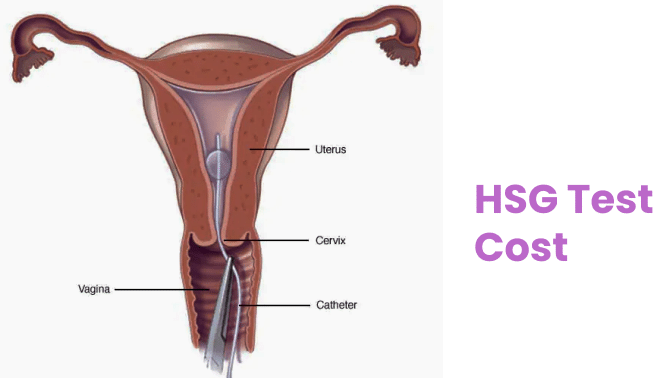An HSG (hysterosalpingogram) test is a medical procedure that examines a woman’s uterus and fallopian tubes to evaluate fertility or investigate the cause of repeated miscarriages. The test uses an X-ray and a contrast dye to visualize the shape of the uterus and check for blockages or abnormalities in the fallopian tubes. It is typically performed for women who are having difficulty conceiving or who have experienced multiple miscarriages.
Factors Affecting HSG Test Cost
Several factors influence the cost of an HSG test:
- Geographic location: Prices may vary depending on the country or region where the test is performed. Urban areas generally have higher costs compared to rural regions.
- Type of healthcare facility: Private clinics and hospitals typically charge more than public healthcare facilities.
- Insurance coverage and out-of-pocket costs: The extent of insurance coverage for the test affects how much the patient is required to pay out-of-pocket.
- Physician and specialist fees: The expertise and experience of the healthcare provider may also influence the cost.
Benefits of HSG Test
The HSG (hysterosalpingogram) test offers several benefits in the evaluation of female fertility and the investigation of repeated miscarriages. Here are some of the primary advantages of undergoing an HSG test:
- Identification of uterine abnormalities: The HSG test can detect structural abnormalities in the uterus, such as fibroids, polyps, or congenital malformations, that may interfere with successful conception or pregnancy.
- Assessment of fallopian tube function: The HSG test can determine if the fallopian tubes are open, blocked, or partially obstructed. Blockages may prevent the sperm from reaching the egg or hinder the fertilized egg from traveling to the uterus for implantation.
- Diagnosis of unexplained infertility: For couples experiencing difficulty conceiving without a known cause, an HSG test can provide valuable information to help identify potential issues with the female reproductive system.
- Guiding fertility treatments: Results from an HSG test can help healthcare providers tailor fertility treatments, such as intrauterine insemination (IUI) or in vitro fertilization (IVF), based on the patient’s unique needs.
- Therapeutic benefits: In some cases, the HSG test may have a therapeutic effect. The introduction of the contrast dye into the fallopian tubes can occasionally dislodge minor blockages, potentially improving fertility.
- Relatively non-invasive: Compared to other diagnostic procedures like laparoscopy, the HSG test is less invasive and generally has a shorter recovery time.
- Cost-effective: While costs can vary, the HSG test is generally more affordable than more invasive diagnostic procedures, such as laparoscopy or hysteroscopy.
- Planning for future pregnancies: For women who have experienced multiple miscarriages, the HSG test can help identify underlying issues and provide information to guide further treatment or interventions to increase the chances of a successful pregnancy.
Overall, the HSG test is a valuable tool for evaluating female fertility and understanding potential issues related to conception or miscarriages. It can provide crucial information to guide treatment plans and help couples make informed decisions about their fertility journey.
Average HSG Test Costs
The cost of an HSG test varies across the globe. Here are some average costs by region:
- United States: $800 – $2,500
- Europe: €300 – €800
- Asia: $300 – $1,000
- Other regions: Prices may vary significantly depending on the country’s economic status and healthcare system.
Insurance and HSG Test Costs
Insurance coverage for HSG tests depends on the individual’s insurance policy and the reason for the test. Some insurance providers cover the test as part of fertility evaluation or diagnostic procedures, while others may not cover it at all. It’s essential to consult with your insurance provider to determine coverage and out-of-pocket expenses.
Read Also: What is the cost of HSG test in Ghana
Low-Cost HSG Test Options
For those seeking affordable HSG test options, consider:
- Public healthcare facilities: These facilities often offer lower prices compared to private clinics.
- Nonprofit organizations and clinics: Some organizations provide low-cost or subsidized HSG tests to eligible individuals.
- Health fairs and community events: Local events may offer discounted or free HSG tests as part of a broader healthcare initiative.
Financial Assistance and Payment Plans
Financial assistance programs may be available for eligible patients who need help covering the cost of their HSG test. Contact your healthcare provider or local health department to inquire about assistance options. Some clinics and hospitals also offer payment plans, allowing patients to pay for their HSG test in installments.
Preparing for an HSG Test
Before undergoing an HSG test, patients should:
- Consult with their healthcare provider about the test’s purpose, risks, and benefits.
- Ensure they understand the costs involved and their insurance coverage.
- Prepare for the test by following any pre-test instructions provided by the healthcare provider.
Alternative Tests and Procedures
There are alternative tests and procedures available for evaluating fertility and investigating miscarriages:
- Sonohysterography: A less invasive procedure that uses ultrasound and saline solution to visualize the uterus.
- Laparoscopy: A surgical procedure that allows direct visualization of the reproductive organs.
Comparing costs and effectiveness is essential when deciding which test is best suited for your needs.
Conclusion
Understanding the costs associated with an HSG test is crucial for making informed decisions about fertility testing. Consult with your healthcare provider and insurance company to determine coverage and out-of-pocket expenses.
Explore low-cost options, financial assistance programs, and payment plans to manage costs. Finally, weigh the benefits and risks of alternative tests before deciding on the most appropriate approach for your specific situation.
